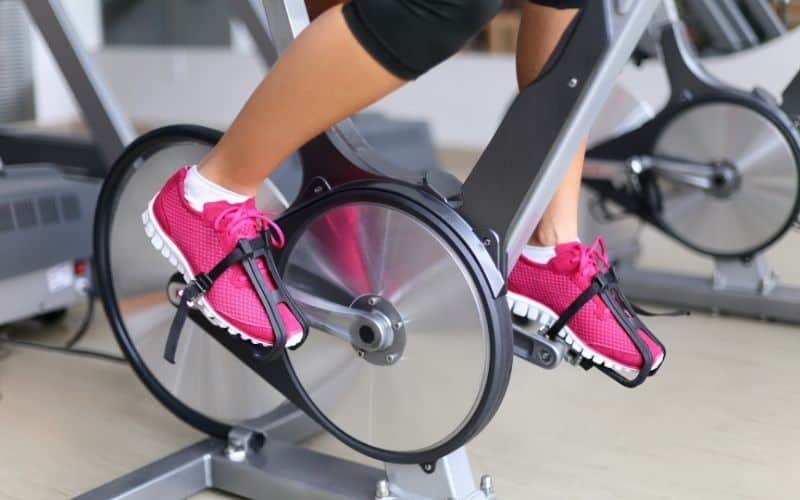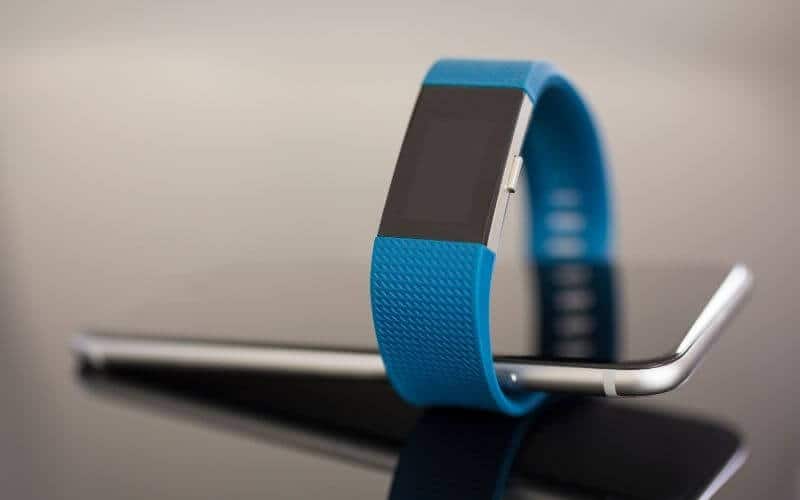I like walking, but I like riding my bike more. No question. However, 10,000 steps a day is a good measurement of a decent amount of exercise, so I’m keen to know how to convert exercise bike miles to steps!
In this article, I’ll show you how to convert exercise bike miles to steps, so you can easily track your progress and compete with your friends. Get ready to take your fitness game to the next level!
Convert Exercise Bike Miles To Steps
There are multiple ways to convert exercise bike miles to steps:
- Approximation
- Fitness Tracker
- Stride Calculation
- PEHP Conversion Chart
- Fitness Tracker Hack
Just remember to be consistent with your tracking method.
Let’s dig into each one in more detail:
1. Approximation Method
So if we run on the understanding that one hour of cycling at a moderate pace equates to approximately 10,000 steps, it becomes an easy way to convert your cycling time into a number of steps.
One thing I will say is while this method is simple, it’s not the most accurate, but it does give you a rough, easy-to-work-out way.
For example, if you clock up 30 mins on your portable turbo trainer, you can count that as doing 5,000 steps. Double your time, and you double your steps. Easy!
Many people, including health experts, consider walking 10,000 steps daily beneficial for your health, which should be your target.
Of course, walking 10,000 steps daily can take up a fair chunk of your day if your job is primarily desk-bound. I know I’ve struggled to get beyond 3,000 steps in the past! Finding time to do those other 7,000 felt like a drain.
This is where cycling can shine, 45 minutes on an exercise bike, and I’ve just added another 7,500 steps to my day.

2. Convert With A Fitness Tracker
Another method I have tried is having a Fitbit (you can do the same with any other fitness tracker).
Depending on how ‘smart’ your fitness tracker is, you may be able to set it to “indoor cycling.” It will time your efforts, measure your heart rate, and calculate your calories burnt.
Walking 10,000 steps is the equivalent of burning around 300 – 400 calories. Seeing how many calories you have burned on your fitness tracking device can help you calculate when you have done the equivalent distance on your exercise bike.
While fitness tracking devices are not 100% accurate at working out calories burned, it’s another tool that can give you a decent guide to monitor your progress.
If you’re using the tracker consistently, it at least gives you a baseline on burned calories. Just be consistent in how you track with your fitness tracker!

3. Your Stride Calculation
This one is slightly more complicated, and you’ll need a few things! Grab a measuring tape and marker pen, and we’re ready.
- Spread your feet so that they are in line with your hips. Using the marker pen, log your position.
- Take ten steps forward. As best as you can, do it naturally, casually!
- Mark the position where you stopped.
- Measure the distance between the two points.
- Now you can work out your stride length. Let’s say that the distance covered by those ten steps was 20 feet. Divide 20 by the number of steps taken, in this case, 10. 20/10 = 2 feet. You can now convert miles covered on your exercise bike into feet using this information.
- There are tools out there to help you work this out but the nuts and bolts of it… multiply the distance traveled on your bike by 5,280.
- Then you divide that number by your stride length, giving you the number of steps.
Let me give you an example:
Cycled 10 miles. So multiple 10 by 5280 = 52,800
Then divide that by your average stride length. In this case, my average stride length is 2ft.
52,800/2 = 26,400 steps!
I’m a big fan of this method. It’s reasonably scientific and gives you a good indication in a simple way.

4. PEHP Conversion Chart
The PEHP Health Benefits created an Activities to Steps Conversion Chart.
Using this conversion chart, consider an hour on the bike at an average pace of 10mph, equivalent to 8,000 steps.
How did they get there?
The PHEP calculated that cycling at a leisurely pace of 10mph is the same as walking 133 steps a minute, so 133 * 60 = 7,980 steps.
If you cycle at 13mph, you’re looking at around 178 steps a minute.
Picking up the pace again to an average of 15mph would be 222 steps a minute.
Using this method, generally, doing moderate cycling for one hour is the same as walking 10,000 steps.
5. Fitness Tracker Hack
Taking a step back to the fitness band tracker, you can strap your fitness band to your ankle, which will give you a reading.
I won’t pretend that will be accurate, but it will do the trick as a basic measurement.
The issue with this method is that cycling and walking are different motions, so the tracker may not pick up when your leg is moving, or it can pick up the movement too much and over-track your steps.
That’s why I’d always recommend setting it to a workout on your tracker and then converting the miles to steps if you want to monitor your steps per day.

How Many Miles On A Stationary Bike Equals 10,000 Steps?
If we work on the third method discussed above, assume the stride length is 2ft.
Cycle 3.8 miles. Multiply by 5280 = 20,064
Then divide that by the stride length.
20,064/2 = 10,032 steps.
So you would have to cycle 3.8 miles to cover 10,000 steps.
This is an estimated conversion, and the actual number can vary based on factors such as the intensity of your workout and individual fitness level.
It’s always best to use this as a guideline and adjust it according to your fitness goals and experiences.
Frequently Asked Questions
Does walking or biking a mile burn more calories?
The average walking speed is three mph; you are likely to burn 232 calories per hour at that pace (on average, this varies from person to person!). Running can help burn more calories but is not great for your knees.
12mph is an average cycling pace. Again, let’s assume the intensity isn’t great. With that, you are likely to burn 563 calories per hour.
When you look at those figures, you can see that riding a bike does burn more calories. If you’re looking for a way to maximize your workout time and can’t decide between walking and cycling, perhaps now you have your answer!
Can I use a pedometer to count steps while cycling?
Pedometers are designed to count steps, which involve a specific kind of motion different from pedaling a bike. Because of this, they may not provide an accurate count of ‘steps’ from cycling.
However, many modern fitness trackers and smartwatches can detect different activities. They can provide more accurate activity tracking, including converting cycling distance to an estimated step count.
Is there a conversion factor for exercise bike miles to steps for elliptical machines and other types of exercises?
Conversion factors for different exercises vary due to the different levels of effort required for each activity.
For elliptical machines, it’s generally accepted that 1 mile on an elliptical equals around 1,600 steps. These are approximations, and individual results may vary.
Conclusion
As you can see, several ways to convert your exercise bike miles into steps exist.
Do remember that not all methods are accurate, but they can give you a general idea. Just be consistent with how you track your progress.
If you’re like me, switching exercise types can make all the difference to whether or not I do a workout that day, so it’s helpful to convert all exercises into one format.
How are your fitness goals going?
You may also be interested in the following:

